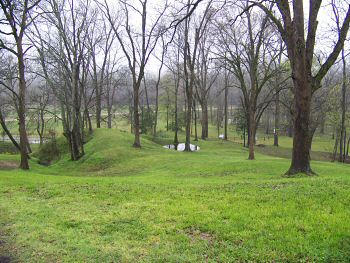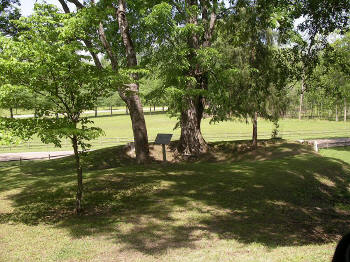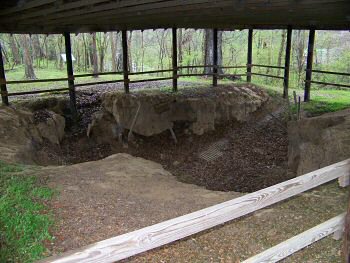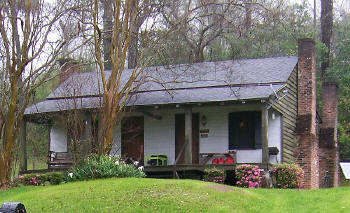 |
|
(3-2009)
Enlarge
Fort Wade. Near the
Grand Gulf Military Monument Visitor Center. Site
Marker: On a shelf overlooking the charred ruins of Grand
Gulf the Confederate engineers built Fort Wade. Guibor's and Wade's
Missouri Batteries manned its four big guns. When Admiral David G.
Farragut's squadron passed Grand Gulf on March 31, the guns of Fort
Wade roared into action. General John S. Bowen, the Confederate commander
at Grand Gulf, had a narrow escape when one of the 20-pounder Parrott's
burst as he entered the emplacement. On April, 29, four of Admiral David
D. Porter's "City Series" ironclads came down river, and took
position one-fourth of a mile from Fort Wade. A terrible artillery
duel ensued. They were joined by the mighty "Lafayette." Fort
Wade was smothered by the storm of shot and shell delivered by the five
gunboats. Two 32-pounder rifles were dismounted, and the parapet knocked
to pieces. Colonel William Wade has his head torn off. By 11 A.M. Fort
Wade had been silenced and Porter's entire squadron concentrated its fire
on Fort Cobun |






